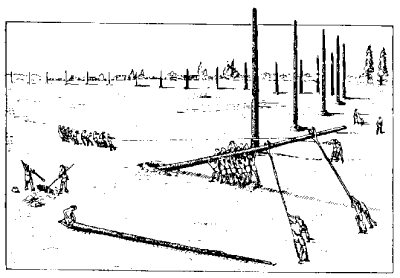 |
Science Frontiers ONLINE No. 115: Jan-Feb 1998 |
|
|
Woodhenges Before Pyramids
The ancient inhabitants of Britain were constructing massive structures before Cheops, builder of the Great Pyramid, was even born! One of these structures is 5,000 years old. It is located at Stanton Drew, in southwestern England. But tourists at the site see only the Great Circle of standing stones, which is impressive enough but only the tip of the iceberg, so to speak. What is more spectacular is "seen" only by sensitive magnetometers. These instruments detect faint, ghostly remains of the magnetotactic bacteria that consumed the giant oak pillars that graced this site five millennia ago.
The soil inside the Great Circle reveals that there were once 400-500 oak pillars on the site. These massive cylinders were probably a meter in diameter, 8 meters (26 feet) high, and weighed 5 tons each. The rings of pillars occupied an area about the size of a football field (100 meters in diameter). The Stanton Drew woodhenge was probably too large to have been roofed, but the oak columns might have been carved or decorated.
Why would anyone cut, haul, and array hundreds of massive oak pillars in nine concentric circles? Obviously, the ancient Britons used this oaken temple to seek help from supernatural powers! Well, that's what the archeologists say, but who really knows?
(Hawkes, Nigel; "Woodhenge Find Rivals Stone Circles," London Times, November 11, 1997. Cr. A.C.A. Silk. Also: Aveling, Elizabeth; "Magnetic Trace of a Giant Henge," Nature, 390:232, 1997.)
 | Contrary to the London Times article, Woodhenges are not unique to Britain. This is an artist's conception of the one at Cahokia, Illinois. |